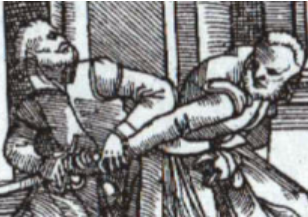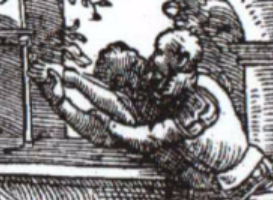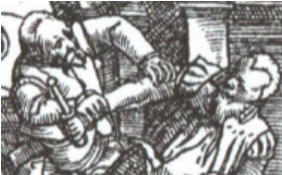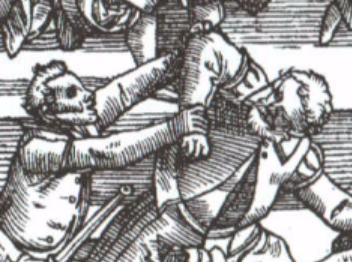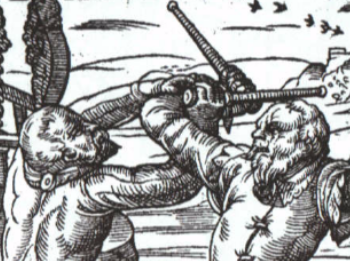Joint locking techniques
Meyer provides a number of joint locking techniques designed to control the opponent's arm (usually their weapon arm) by moving against the natural direction of motion for a joint.
The following five basic drills provide a foundation on which students can build while training. For beginner training these are performed from a neutral position in which the recipient of the lock stands with their right foot forward, arm extended and slightly bent. The student performing the technique stands with their left foot forward outside the recipient's lead leg. The student's left hand rests on the outside of the target's right elbow, and their right hand is on the outside of their wrist.
For later levels of experience this moves to a dynamic technique in both unarmed and armed situations.
Contents |
Close Straight Arm Break to the Elbow/Shoulder
This technique extends the arm straight out and applies pressure to the elbow.
- Grasp the right wrist tightly with the right hand, and bring it to the chest.
- Grasp the right forwarm with the left hand, clutching it tightly to the body.
- Turn slightly to extend their arm, rolling it forward so their elbow is upward.
- Place the elbow a hand's width above their elbow, pressing down and lowering the body, forcing them down or breaking their elbow.
Additional pressure can be added by compassing the rear leg around, or by stepping forward in front of their lead leg with the left leg.
Figure 4 Break
This technique locks the elbow and shoulder in a bent position, extended out backward past the normal range of motion.
If the opponent resists the previous technique with strength by bending and lifting their arm, this technique can counter the resistance.
- Simultaneously lift their wrist with the right hand, and drive down into the crook of their elbow with your own bent arm.
- Grasp your right forearm with your left hand and turn the hips toward the opponent in a cross stepping Posture.
- Either step through behind them with the right leg, extending their arm over backward, OR
- Compass around with the left leg in an anticlockwise direction, twisting the lock tighter in the process.
Extended Straight Arm Break to the Elbow/Shoulder
Similar to the first technique, this locks the elbow out, however in this case it uses extended arms to do so.
If the opponent straightens their arm from the previous lock, you can use this to counter them.
- Grasp the left wrist with the right hand.
- Grasp just above the elbow tightly with the left hand.
- Extend your arms out almost as if you're winding from ochs to pflug with their arm instead of a sword.
- Bring your right hand down onto your right thigh gather back slightly with the right foot, turning the hips in so you're in a broad stance, their elbow straight in front of you, evenly balanced on legs widely spaced apart.
Rear Bent Arm Break to the Elbow/Shoulder
This technique bends their elbow up and pushes it forward so as to dislocate the shoulder.
If the opponent bends their arm strongly to escape the previous technique, this can be applied to counter them.
- Grasp the left wrist with the right hand.
- Grasp just above the elbow tightly with the left hand.
- Extend your arms out almost as if you're moving up to an ochs like position, press their elbow.
- Abruptly jerk their elbow down slightly to bend it (they tend to naturally resist this way anyway) and press their right wrist toward them to bend the arm.
- Step with the right foot, pushing their elbow up and over like a crashing wave, and bringing their right wrist onto the front of your right thigh, thus dislocating the arm or throwing them.
Reverse Figure 4 Lock
This technique bends their elbow similarly to the previous figure 4, but with changed hand positions. It results in a dislocated shoulder or spiral fracture of the arm if done forcefully.
If the opponent resists the previous technique by dropping their elbow then this can be used to counter them.
- Grasp the left wrist with the right hand.
- Grasp just above the elbow tightly with the left hand.
- Pull the right hand toward you and push down and away with the left to initiate the bending of the arm.
- Bring the left hand over to grasp their wrist, slide the right arm through the outside of their arm from below to grasp over your left hand.
